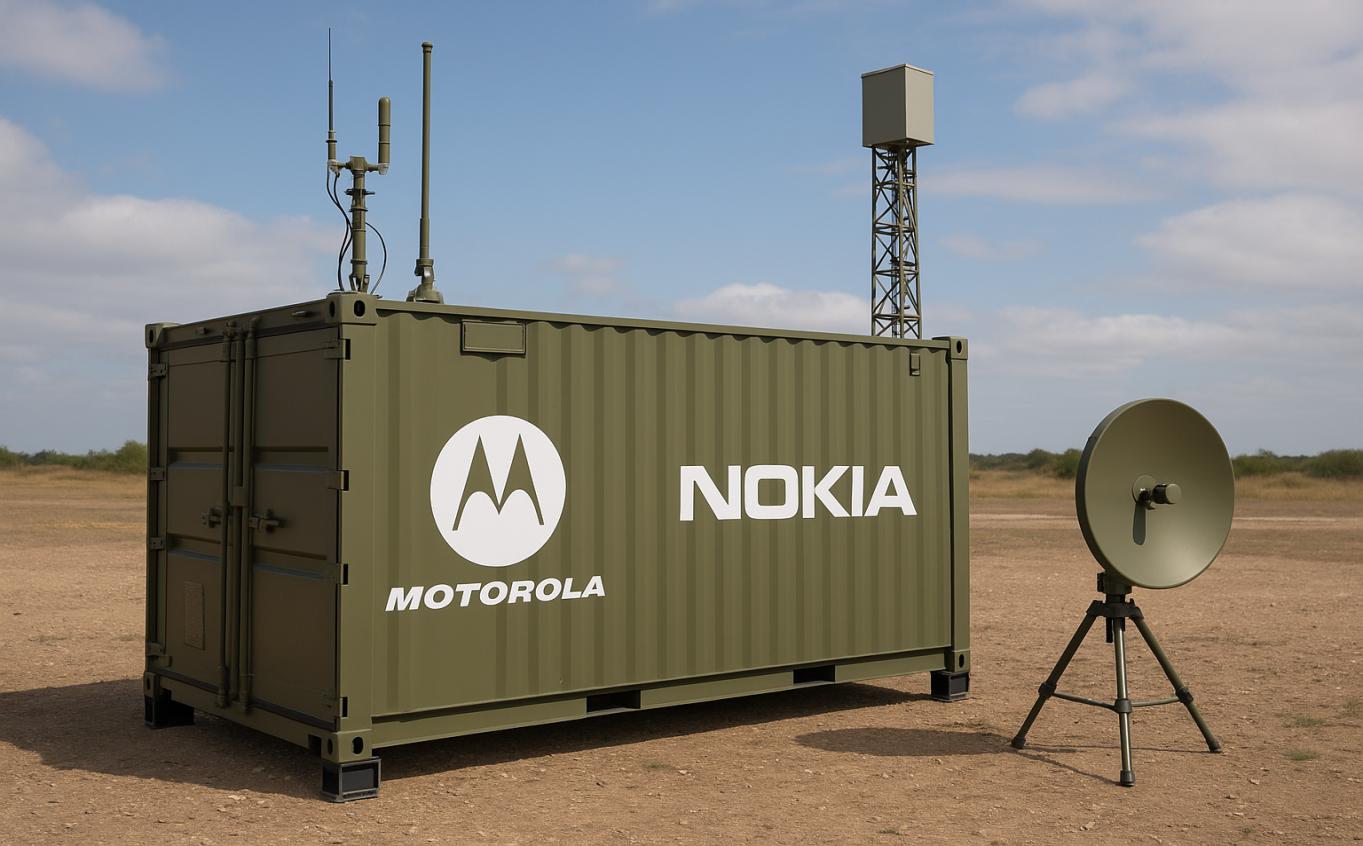
Recently, MOTOROLA Solutions and Nokia announced a strategic partnership to jointly launch a tactical communication network using 5G AirScale and TETRA technologies, aiming to provide the UK's defense agencies with next-generation containerized tactical communication solutions. From the perspective of technology integration and application, this cooperation, although demonstrating the innovative attempts of both sides in the field of military communication, has also exposed some technical challenges and potential problems worthy of in-depth discussion.
Firstly, from the perspective of technology integration, the combination of MOTOROLA Solutions' deployable Land trunking radio (TETRA) infrastructure and Nokia's 5G AirScale product portfolio can theoretically provide reliable and secure voice and data communication for the frontline. However, the complexity of technology integration cannot be ignored. As a system specifically designed for public safety and critical communications, the integration of TETRA technology with 5G technology requires overcoming multiple technical obstacles such as spectrum compatibility, signal interference management, and data transmission efficiency. In actual deployment, how to ensure seamless integration of the two technologies and avoid communication interruption or delay caused by technical differences is a key issue that needs to be urgently addressed.
Looking further, the solution adopts a robust and deployable container structure. Although it claims to be put into use within 30 minutes, behind this rapid deployment capability lies a severe test of environmental adaptability. Military operations often take place in extreme or unpredictable environments, such as high temperatures, severe cold, sandstorms or high humidity conditions, all of which may pose a threat to the stable operation of equipment inside containers. Therefore, how to ensure that the containerized system can still maintain efficient and stable communication capabilities under various harsh conditions is an indispensable part in the technical implementation.
MOTOROLA Solutions' Silvus MANET technology provides flexible backhaul and is designed to expand connections across diverse combat environments and vast geographical areas. Although mesh network technology can enhance the flexibility and robustness of communication, when deployed on a large scale, how to effectively manage the communication paths between network nodes, avoid network segmentation caused by node failures, and how to optimize network resource allocation to improve overall communication efficiency are all difficulties in technical implementation. In addition, the communication requirements for highly secure, AI-driven remote video sensors and unmanned systems have put forward higher demands on network bandwidth and latency. How to meet these high-bandwidth and low-latency application requirements while ensuring security is another challenge in technical design.
Looking back at the containerized communication network deployed by MOTOROLA Solutions to the German Armed Forces in 2021, while the interoperability of its mobile and fixed versions facilitated collaboration in crisis or disaster relief situations, it also exposed the complexity of standardization and compatibility issues. The differences in communication standards among different countries and organizations may lead to information silos or communication barriers in actual collaboration, affecting the efficiency of coordinated operations. Therefore, how to promote the unification and compatibility of communication standards on a global scale is an important direction for enhancing the effectiveness of international military cooperation.
From a long-term perspective of technological development, although the cooperation between MOTOROLA Solutions and Nokia reflects the exploration of next-generation military communication technologies, the pace of technological innovation is often accompanied by unknown risks and challenges. The application of 5G technology in the military field is still in its infancy, and its security, stability and reliability need to undergo more rigorous testing and verification. Especially in key areas related to national security, any technical negligence may lead to incalculable consequences.
In conclusion, the tactical communication network solutions jointly launched by MOTOROLA Solutions and Nokia are confronted with numerous challenges in terms of technology integration, environmental adaptability, network management, standardization and compatibility, as well as long-term technological development. These challenges not only require both sides to continuously invest in technological research and development, but also need to constantly optimize and improve through theoretical exploration and practical verification to ensure that new technologies can truly meet the high standards of modern military operations for security, resilience and real-time connectivity.

On the morning of December 29th local time, the precious metals market plummeted sharply after briefly breaking through the $80 per ounce mark.
On the morning of December 29th local time, the precious me…
According to the US media Barchart, recently, the fluctuati…
On December 29th, Mar-a-Lago in Florida, USA, witnessed a h…
SoftBank Group announced on Monday that it has agreed to ac…
Recently, the US State Department issued a visa ban, adding…
On January 20, 2025, just 13 days after taking office, Trum…